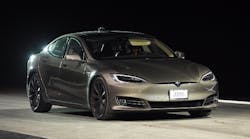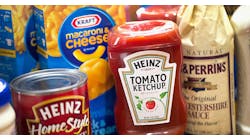Tesla Inc. posted a narrower quarterly loss than estimated and said the much-anticipated Model 3 electric sedan remains on schedule, as Chief Executive Officer Elon Musk closes in on his pursuit of more mainstream car buyers.
The electric-car maker expects to deliver as many as 50,000 vehicles in the first half of the year and still sees Model 3 production starting in July, according to a letter to shareholders Wednesday. The Palo Alto, California-based company lost 69 cents a share during the final three months of last year, a slimmer deficit than analysts projected.
The confirmation for the car Tesla plans to sell for close to $35,000 before incentives adds credence to Musk’s ability to deliver for investors who have bid up the 14-year-old company’s market value to rival those of automakers which have been around more than a century and sell millions of cars a year. Tesla’s shares were more overvalued than ever before as it approached its first quarterly earnings report since the acquisition of money-losing SolarCity Corp.
“The recent run-up in Tesla stock has less to do, in our view, with anything around the near-term financials, and more to do with the nearly superhero status of Elon Musk,” Brian Johnson, an analyst with Barclays Plc, wrote in a report Wednesday before the results. “Since Tesla is already valued as if it’s the next Nissan, Ford, or Honda, it implies that much of the future growth is more than already reflected in the stock price.”
The fourth-quarter loss, excluding some items, was narrower than the $1.14 a share average estimate among analysts surveyed by Bloomberg. The shares climbed 0.3% to $278.19 as of 4:45 p.m. in New York after the close of regular trading.
Model 3 output should exceed 5,000 vehicles a week at some point in the fourth quarter and 10,000 vehicles a week by sometime in 2018, according to the letter. The car will rely on the so-called gigafactory east of Reno, Nevada, that began producing battery cells earlier this year in partnership with Japan’s Panasonic Corp. The two companies also have said they’ll start jointly making solar cells and panels this summer at a factory in Buffalo, New York.
“It is all about the Model 3, and Tesla says the suppliers are on time, which historically has been a thorn in Tesla’s side,” said Ben Kallo, an analyst at Robert W. Baird & Co. “SolarCity is not the drag that people thought it would be, and it’s actually adding cash to the balance sheet.”
Tesla expects to finalize locations for at least two more plants later this year, and possibly as many as five gigafactories, according to the letter, which doesn’t specify what the sites will build.
The maker of higher-priced Model S sedans and Model X sport utility vehicles has had trouble meeting previous production forecasts and blamed a series of issues throughout 2016 for missing quarterly and annual projections. Tesla said earlier this year it delivered about 22,200 cars worldwide in the fourth quarter, bringing its total to 76,233 in 2016, less than an initial forecast for 80,000 to 90,000.
Musk has vowed to make 500,000 cars annually in 2018. Meeting that ambitious target will depend a great deal on the Model 3, which is expected to boast about 215 miles of battery range per charge. Tesla reported 373,000 pre-orders for the Model 3 as of May, when it last updated its reservation tally.




